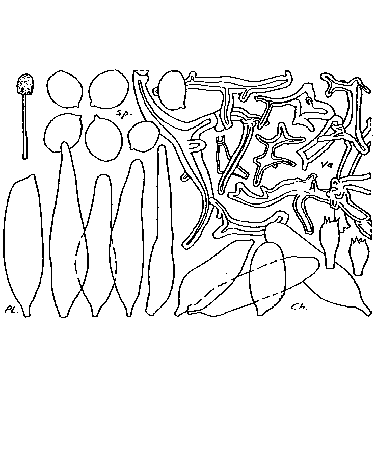Macroscopic features |
Pileus 3-7 x 2-5 mm when still closed, up to 12 mm when expanded, first conical, ovoid or ellipsoid, whitish with beige or ochre centre. Veil breaking up in white or cream to ochre patches. Lamellae, L = 32-38, l = 0-3, rather crowded, free, first white, then greyish to black. Stipe up to 30 x 0.5-1 mm, white, greyish white, somewhat floccose at clavate base. |
Microscopic features |
Spores [80,4,2] 5.3-6.9(-7.5) x 4.4-6.3 µm, short ovoid, truncate, medium red-brown, with central, 1.0-1.3 µm wide germ pore; Q = 1.05-1.35, av. Q = 1.15-1.25; av. L = 6.1-6.5, av. B = 5.1-5.6 µm. Basidia 12-26 x 8-10 µm, 4-spored, surrounded by (4-)5-6(-7) pseudoparaphyses. Pleurocystidia 50-85 x 12-23 µm, (sub)cylindrical, oblong, narrowly conical, sublageniform or narrowly utriform. Cheilocystidia 30-75 x 10-18 µm, (sub)cylindrical, subutriform or ellipsoid. Elements of veil thick-walled, strongly multiple-branched and diverticulate, 2-8(-12) µm wide; walls more than 1.5 µm thick in places (up to 2.5 µm), pale yellow-brown. Clamp-connections present. |
Habitat & distribution |
Solitary or a few together in small groups on dead stems and leaves of herbs, very rare. So far only known from two collections. |
Remarks |
Coprinus spec. Uljé 1160 differs from C. friesii by much smaller spores and the habitat: growing on herbaceous stems. Both species have very thick-walled velar elements, which are more than 1.5 µm thick in places. |

[Copyright © by Uljé]